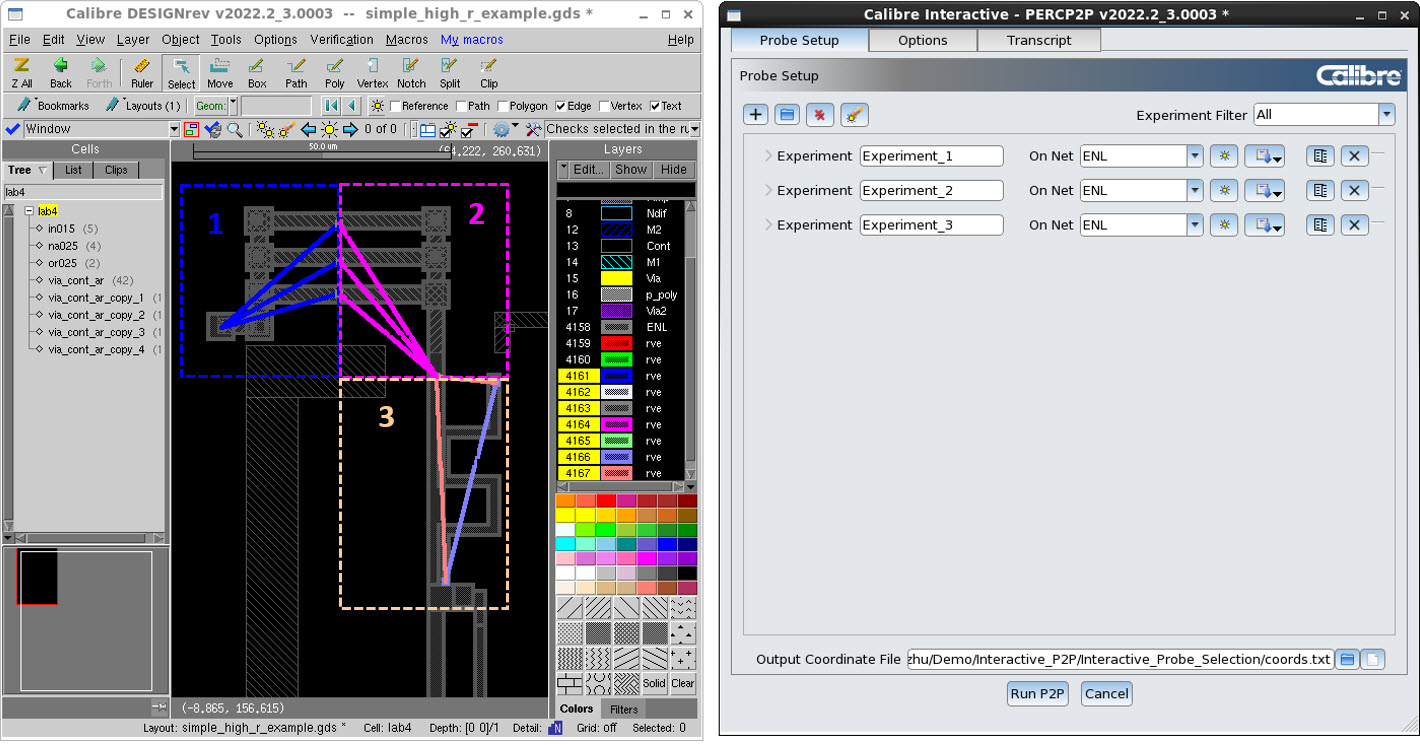Find high resistance faster in P2P violations with interactive P2P analysis

By Slava Zhuchenya
So your net trace has too much parasitic resistance. Where is it coming from? You ran your Calibre® PERC™ point to point (P2P) physical verification flow, and it returned a violation. You know the total effective resistance, but you don’t quite know which portion of your routing the error might be coming from. Is it a false violation? Are you missing some vias? At this point you might have some ideas, and sure, you could guess, make some adjustments, and rerun. If you weren’t lucky, you repeat that process until you finally locate it. This is just so tedious and time consuming! Wouldn’t it be nice to just be able to select and measure a smaller section of the trace and see exactly how much resistance it is contributing to the total reported in the violation? The Calibre RVE PERC functionality provides a new interactive P2P utility that allows designers to do just that.
You can now look at an existing Calibre PERC P2P database in the Calibre RVE results viewer and quickly set up additional target P2P simulations to help you identify where a high resistance value is coming from on a given layout net. Being able to look at a net trace section in the layout and quickly measure the effective resistance by interactively placing probe points in that section significantly improves the productivity of designers during the Calibre RVE PERC debug process.
For example, the standard Calibre PERC P2P run produces one effective R value per violation. Designers can interactively segment the result net into smaller segments and run Calibre RVE PERC P2P analysis on them. Once they have those values, they can now see which segment is contributing more resistance than others. They then know to focus their debug efforts on a much smaller portion of their layout. This focus not only saves them time when searching for problem areas, but also saves a significant amount of time setting up and running subsequent Calibre PERC P2P reruns to verify if the changes to the layout fix the violations.
Want to get more details and see some examples of how interactive P2P analysis increases productivity in Calibre RVE PERC P2P debug? Download a copy of our paper, Interactive point-to-point resistance simulations simplify net segmentation for faster, easier debug of high resistance segments.


